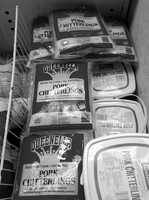








Freezing food preserves it from the time it is prepared to the time it is eaten. Since early times, farmers, fishermen, and trappers have preserved their game and produce in unheated buildings during the winter season.
When we crave fresh fruits and vegetables in the middle of winter, we can thank Clarence Birdseye for the next best thing. Clarence Birdseye invented, developed, and commercialized a method for quick-freezing food products in convenient packages and without altering the original taste. While Clarence Birdseye has become a household name, his process has evolved into a multi-billion dollar industry.
Clarence Birdseye was born in 1886 in Brooklyn, New York A taxidermist by trade, but a chef at heart, Clarence Birdseye wished his family could have fresh food all year. After observing the people of the Arctic preserving fresh fish and meat in barrels of sea water quickly frozen by the arctic temperatures, he concluded that it was the rapid freezing in the extremely low temperatures that made food retain freshness when thawed and cooked months later.
In 1923, with an investment of $7 for an electric fan, buckets of brine, and cakes of ice, Clarence Birdseye invented and later perfected a system of packing fresh food into waxed cardboard boxes and flash-freezing under high pressure. The Goldman-Sachs Trading Corporation and the Postum Company (later the General Foods Corporation) bought Clarence Birdseye’s patents and trademarks in 1929 for $22 million. The first quick-frozen vegetables, fruits, seafoods, and meat were sold to the public for the first time in 1930 in Springfield, Massachusetts, under the tradename Birds Eye Frosted Foods.